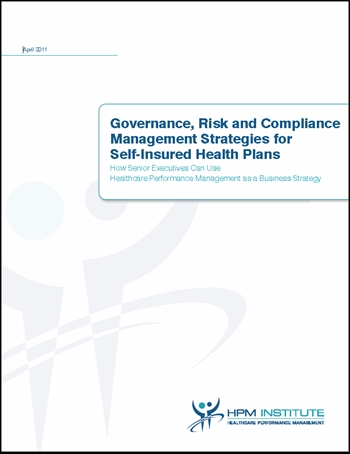StrategyDriven Enterprises Extends its Advisory Services into the Healthcare Industry, Partners with Artower Advisory Services
StrategyDriven Enterprises LLC and Artower Advisory Services, LLC partner to provide healthcare industry executives and managers with Affordable Care Act mandated Quality Assurance Performance Improvement (QAPI) program consulting services.

“Healthcare industry leaders must find cost effective ways to meet the new quality assurance and performance improvement mandates of the Affordable Care Act,” explains Nathan Ives, StrategyDriven’s Chief Executive Officer. “We believe by leveraging experiences from other industries that for decades have complied with similar mandates, healthcare executives can not only meet and exceed these ACA requirements, but do so in a highly cost effective manner.”
“We are excited about the opportunity to combine StrategyDriven’s capabilities with Artower’s healthcare industry experience,” asserts Scot Park, Artower’s Chief Executive Officer. “This partnership will create out-of-the-box products and provide advisory services that enable healthcare organizations, both large and small, to rapidly achieve cost effective compliance with the ACA’s mandates while simultaneously driving improved patient care.”
The StrategyDriven / Artower team provides healthcare industry leaders with an array of actionable performance improvement and regulatory compliance support in the areas of:
- Self-assessment programs
- Corrective action programs
- Organizational performance monitoring programs
- Risk assurance programs
About StrategyDriven
StrategyDriven provides executives and managers with the planning and execution advice, tools, and practices needed to create greater organizational alignment and accountability for the achievement of superior results. We believe a clear, forward-looking strategy, translatable to the day-to-day activities of all organization members, is critical to realizing success in today’s fast paced market environment. Not only does a compelling, well-executed strategy align individuals to common goals, it ensures those goals best serve the company’s mission.
At StrategyDriven, our seasoned business leaders deliver real-world strategic business planning and tactical execution best practice advice – a blending of workplace experience with sound research and academic principles – to business leaders who may not otherwise have access to these resources.
StrategyDriven refers to the family of organizations comprising StrategyDriven Enterprises LLC. For more information, please visit www.StrategyDriven.com.
About Artower Advisory Services
Headquartered in Willoughby, Ohio, Artower Advisory Services’ professionals support healthcare industry leaders throughout the United States. The Artower team has expertise in senior housing, aging services, post-acute/long-term care, and behavioral health. Several of our senior professionals previously held leadership positions within major healthcare organizations. Artower’s project teams work collaboratively across disciplines to deliver greater value through improved outcomes, integrated delivery, and lower cost. For more information, visit www.ArtowerAdvisory.com.



 Scot Park is a Principal and co-founder of Artower Advisory Services. He has spent the past two decades serving the Healthcare Industry with a focused on Aging Services, Senior Housing and Post-Acute/Long-Term Care. Scot holds a BA in Economics with concentrated studies in Public Administration from John Carroll University. To read Scot’s complete biography,
Scot Park is a Principal and co-founder of Artower Advisory Services. He has spent the past two decades serving the Healthcare Industry with a focused on Aging Services, Senior Housing and Post-Acute/Long-Term Care. Scot holds a BA in Economics with concentrated studies in Public Administration from John Carroll University. To read Scot’s complete biography,  Explore how Healthcare Performance Management (HPM), combined with self-insurance, can empower organizations not only to better manage their governance, risk and compliance exposures, but also to deliver bottom-line business value to a company.
Explore how Healthcare Performance Management (HPM), combined with self-insurance, can empower organizations not only to better manage their governance, risk and compliance exposures, but also to deliver bottom-line business value to a company. Advocates of the president’s health care reform package have expressed alarm over a wave of mergers spurred by the new law.
Advocates of the president’s health care reform package have expressed alarm over a wave of mergers spurred by the new law.  George Pantos is Executive Director of the Healthcare Performance Management Institute, a research and education organization dedicated to promoting the use of business technology and management principles that deliver better and more cost-effective healthcare benefits for employers who provide health insurance coverage for employees and their dependents. To read George’s full biography,
George Pantos is Executive Director of the Healthcare Performance Management Institute, a research and education organization dedicated to promoting the use of business technology and management principles that deliver better and more cost-effective healthcare benefits for employers who provide health insurance coverage for employees and their dependents. To read George’s full biography,  Daryl Wizelman is a leadership, corporate culture, emotional intelligence, life planning and work/life balance visionary. Daryl combines his inspiring story with some practical tools which can be implemented immediately to improve the lives, careers and companies that he touches. Daryl spends his time speaking, consulting and motivating companies, associations, professional athletes, sports teams and individuals all over the world. To read Daryl’s complete biography,
Daryl Wizelman is a leadership, corporate culture, emotional intelligence, life planning and work/life balance visionary. Daryl combines his inspiring story with some practical tools which can be implemented immediately to improve the lives, careers and companies that he touches. Daryl spends his time speaking, consulting and motivating companies, associations, professional athletes, sports teams and individuals all over the world. To read Daryl’s complete biography,